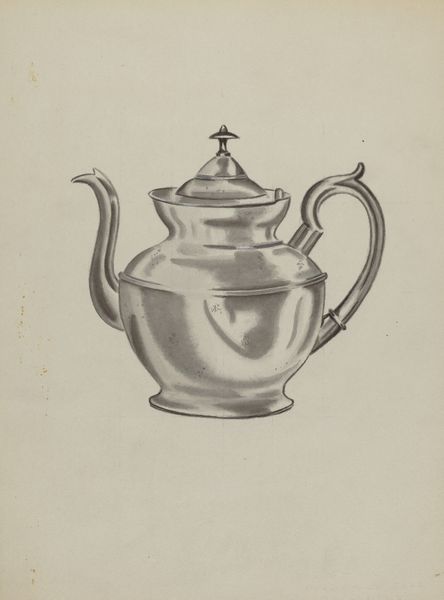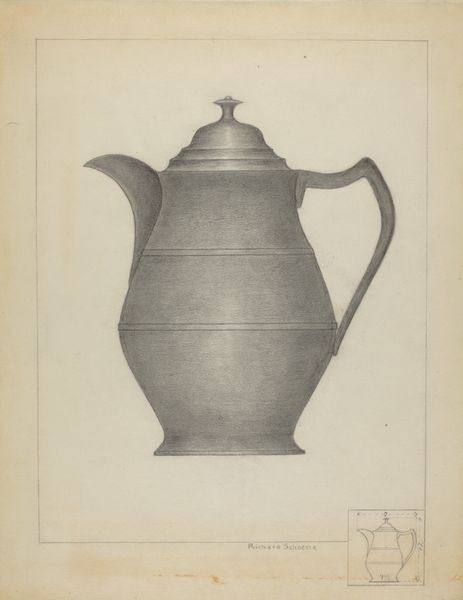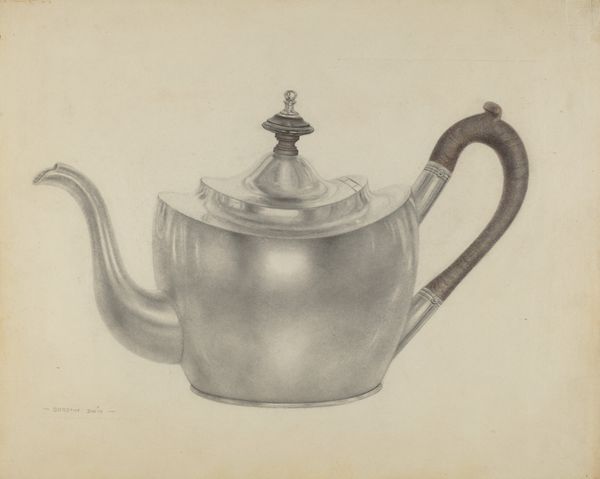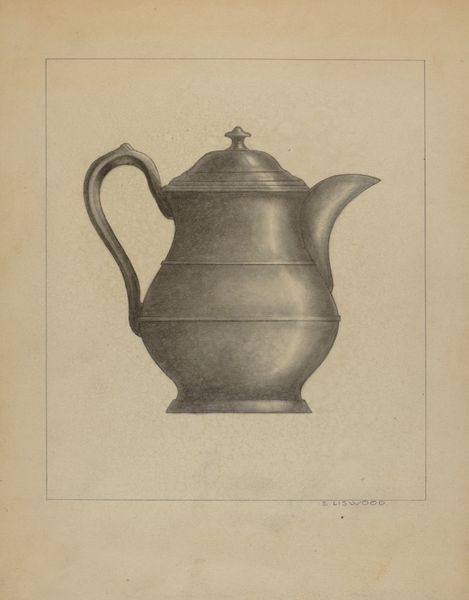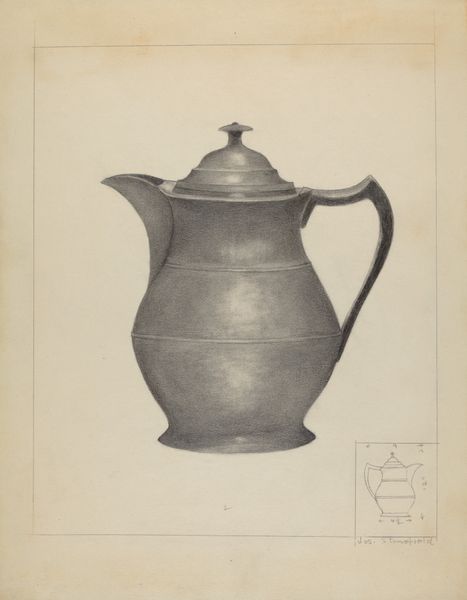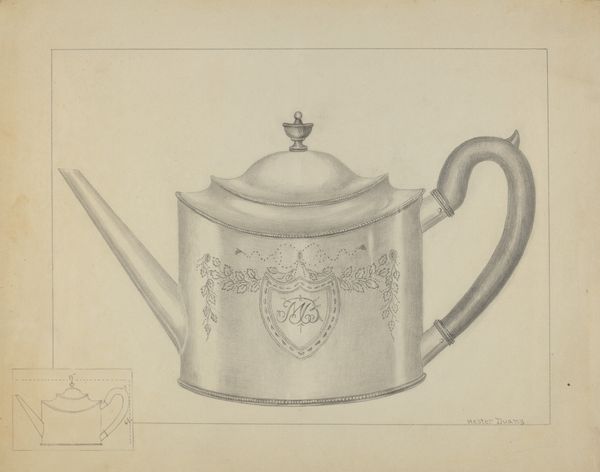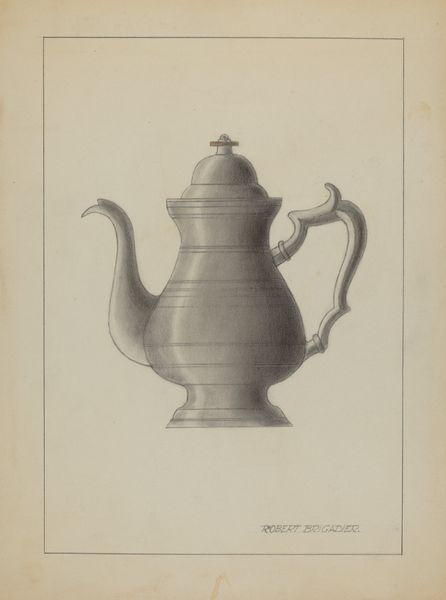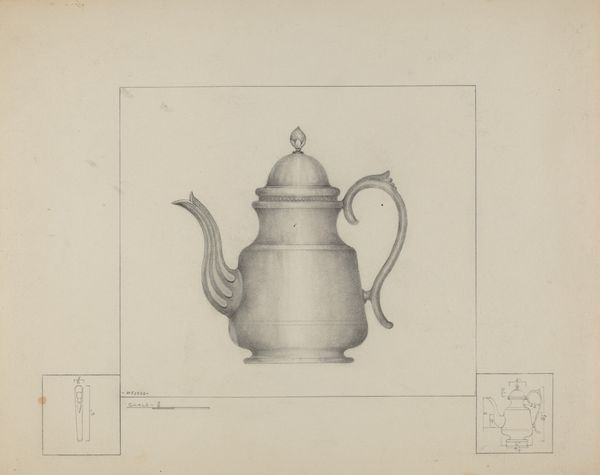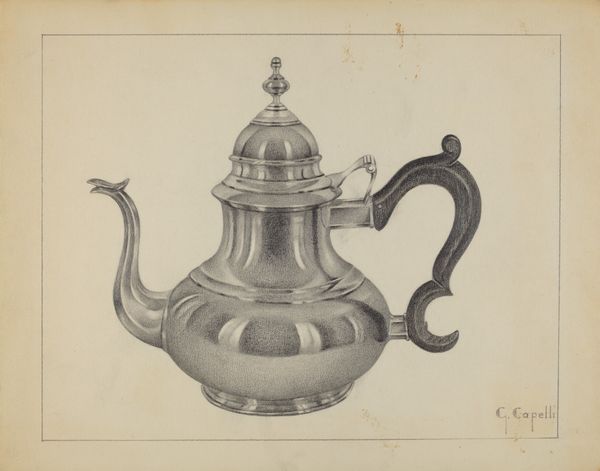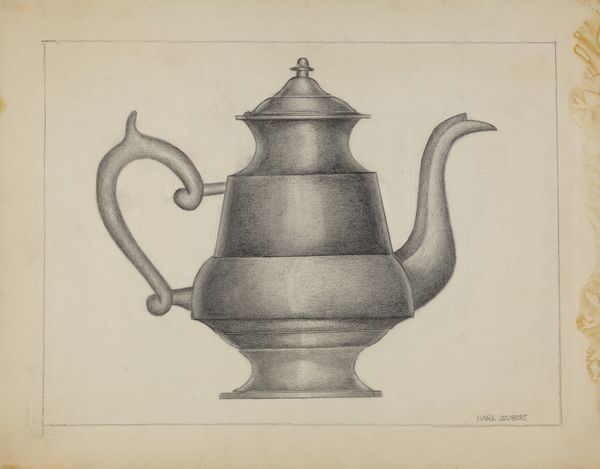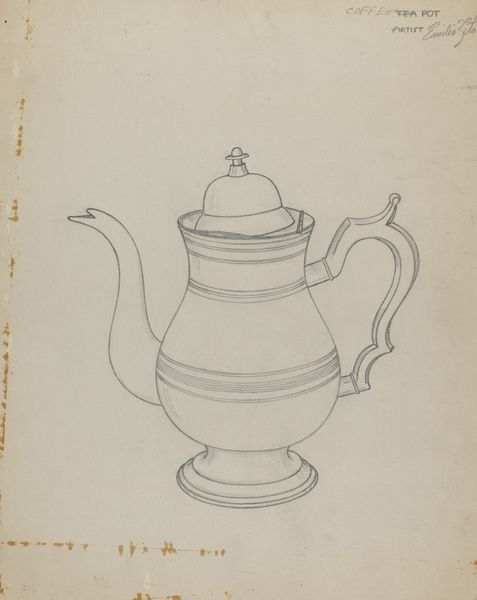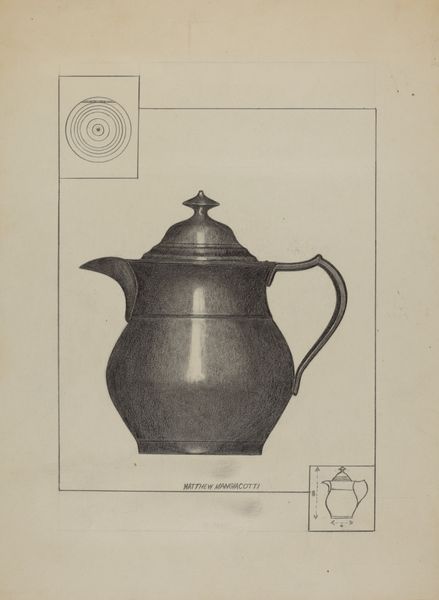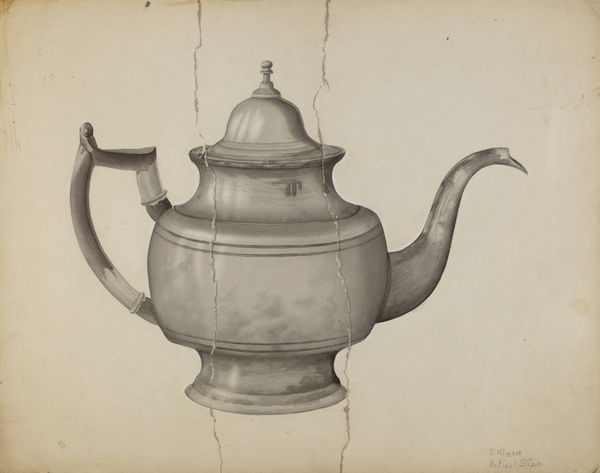
drawing, pencil
#
drawing
#
pencil drawing
#
pencil
#
realism
Dimensions: overall: 22.6 x 29.6 cm (8 7/8 x 11 5/8 in.) Original IAD Object: 8" high; 3 1/2" wide
Copyright: National Gallery of Art: CC0 1.0
Editor: We're looking at Giacinto Capelli's "Silver Teapot" from 1936, rendered in pencil. The reflective quality he's captured is quite striking. What strikes you about this piece? Curator: Well, let's think about the 'how' first. The meticulous pencil work is undeniably skillful, but I’m more interested in the broader implications. Consider the era, 1936. What was silver's significance then? It was not just a metal; it represented status, luxury, even industrial advancement. Editor: So, the choice of silver as a subject points towards societal values of the time? Curator: Precisely. Capelli isn't just depicting an object. He’s showing us the material desires and social strata. Even the 'realism' style becomes a factor. Is it celebrating the industrial process that could perfectly manufacture this form, making it reproducible and widely available? Editor: That's an interesting perspective. I initially saw it as just a simple still life, but now I’m thinking about the production line. What about the teapot form itself? Curator: Excellent question. Teapots were tools that fostered a particular kind of social gathering, rituals around tea consumption in a refined environment. Its status also touches on domestic labor of the time and the process by which silver material comes into existence. This simple form belies complex histories of labor and social expectation. Editor: It’s fascinating how the piece operates on several levels, showing technique, commenting on materials and mirroring social norms. Thanks for shedding light on its context! Curator: It goes to show you that even the everyday objects, carefully rendered, are rich in labor practices, reflecting a deeper understanding of consumption habits, industrial growth, and our material existence. It's a simple still-life hiding more nuanced concerns.
Comments
No comments
Be the first to comment and join the conversation on the ultimate creative platform.
